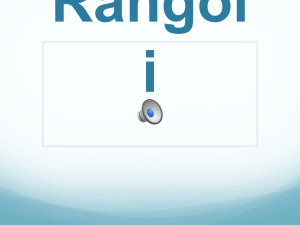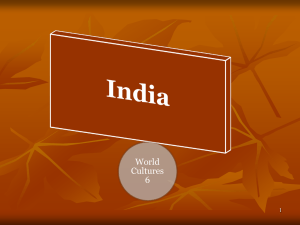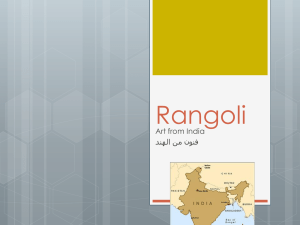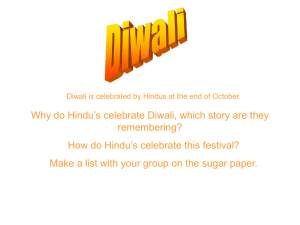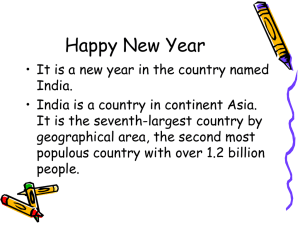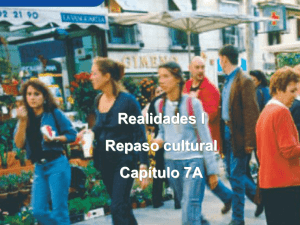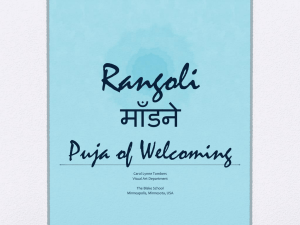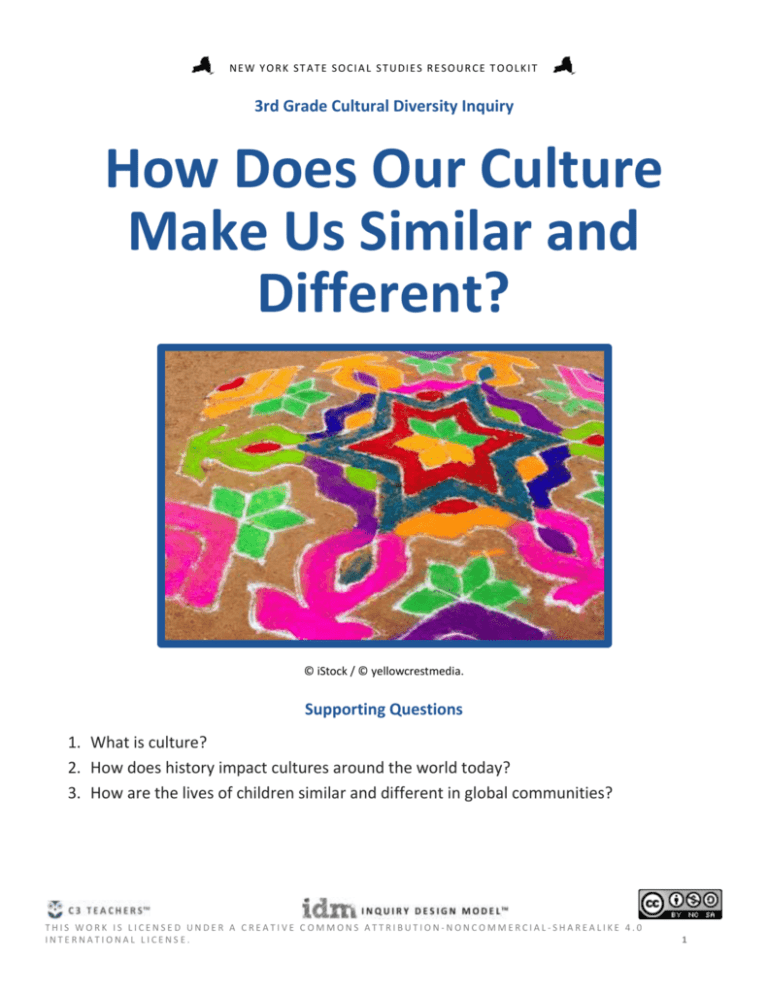
N E W Y O R K S T A T E SO C I A L S T U D I E S R E SO U R C E T O O L K I T
3rd Grade Cultural Diversity Inquiry
How Does Our Culture
Make Us Similar and
Different?
© iStock / © yellowcrestmedia.
Supporting Questions
1. What is culture?
2. How does history impact cultures around the world today?
3. How are the lives of children similar and different in global communities?
THIS WORK IS LICENSED UNDER A CREATIVE COMMONS ATTRIBUTION-NONCOMMERCIAL-SHAREALIKE 4.0
INTERNATIONAL LICENSE.
1
N E W Y O R K S T A T E SO C I A L S T U D I E S R E SO U R C E T O O L K I T
3rd Grade Cultural Diversity Inquiry
How Does Our Culture Make Us Similar and Different?
New York State Social
Studies Framework
Key Idea & Practices
3.5: Communities share cultural similarities and differences across the world.
Staging the Question
Discuss the concept of “culture,” by brainstorming responses to the question, “what does culture look
like?”
Gathering, Using, and Interpreting Evidence
Chronological Reasoning and Causation
Comparison and Contextualization
Geographic Reasoning
Civic Participation
Supporting Question 1
Supporting Question 2
Supporting Question 3
Research
Understand
What is culture?
Understand
How does history impact cultures
around the world today?
Formative
Performance Task
List key details from text and
illustrations to answer the supporting
question.
Featured Source
Source A: “Discovering Culture”
Assess
How are the lives of children similar
and different in global communities?
Formative
Performance Task
Identify examples of historical
influences on present-day cultures
around the world on a three-column
chart.
Formative
Performance Task
Write a paragraph that compares and
contrasts aspects of daily life for kids in
several world communities.
Featured Sources
Source A: “Brazil Today—Carnaval! The
Celebration of Brazil”
Featured Source
Source A: Day in the Life
Source B: Excerpts from Exploring
Countries: France
Source C: “The Ancient Art of Rangoli”
Summative
Performance
Task
ARGUMENT How does our culture make us similar and different? Construct an argument supported with
evidence that addresses the compelling question.
Taking
Informed
Action
ACT Plan for and host a cultural-diversity fair for the other third-grade classes.
THIS WORK IS LICENSED UNDER A CREATIVE COMMONS ATTRIBUTION-NONCOMMERCIAL-SHAREALIKE 4.0
INTERNATIONAL LICENSE.
2
N E W Y O R K S T A T E SO C I A L S T U D I E S R E SO U R C E T O O L K I T
Overview
Inquiry Description
This inquiry engages third graders in expanding their understandings of diverse cultures. The compelling question
“How does our culture make us similar and different?” is intellectually respectful of students who, by their nature,
are interested in people and their similarities and differences. It allows for engagement with several social studies
disciplines as students examine diverse cultures and histories around the globe.
This inquiry embeds the Taking Informed Action sequence throughout. The understand element is developed
through Supporting Questions 1 and 2 while the assess element is represented in Supporting Question 3. The act
piece, the planning and hosting of a cultural diversity fair for other third-grade classes, can be done in addition to,
or as a substitute for, the Summative Performance Task.
In addition to the Key Idea listed earlier, this inquiry highlights the following Conceptual Understandings:
(3.5a) The structure and activities of families and schools share similarities and differences across world
communities.
(3.5b) Communities around the world can be diverse in terms of their members, languages spoken,
customs and traditions, and religious beliefs and practices. People in world communities celebrate various
holidays and festivals.
NOTE: This inquiry is expected to take four to six 30-minute class periods. The inquiry time frame could expand if
teachers think their students need additional instructional experiences (i.e., supporting questions, formative
performance tasks, and featured sources). Teachers are encouraged to adapt the inquiries to meet the needs and
interests of their particular students. Resources can also be modified as necessary to meet individualized education
programs (IEPs) or Section 504 Plans for students with disabilities.
Structure of the Inquiry
In addressing the compelling question “How does our culture make us similar and different?” students work
through a series of supporting questions, formative performance tasks, and featured sources in order to construct
an argument with evidence from a variety of sources.
Staging the Compelling Question
Because culture is such a complex concept, it would useful to give students an open-ended opportunity to offer
their initial ideas through a brainstorming activity whereby they respond to the question, “What does culture look
3
N E W Y O R K S T A T E SO C I A L S T U D I E S R E SO U R C E T O O L K I T
like?” Teachers should chart the students’ responses and return to them throughout the inquiry to see if they want
to add to, delete from, or modify their list.
Supporting Question 1
Supporting Question 1—“What is culture?”—addresses a key consideration in the third-grade curriculum of world
communities and global citizenship. Students learn that culture is an umbrella term for social organization,
customs and traditions, language, arts and literature, religion, forms of government, and economic systems.
Featured Source A provides information about the concepts of culture, customs, and traditions. The formative
performance task asks students to pull those ideas from the featured source and to construct a response to the
supporting question.
NOTE: Lessons 2 and 3 from Unit 1 of Grade 3 NYS ELA Module 2B can be incorporated into this phase of the
inquiry to extend learning and to include additional Common Core ELA objectives.
Supporting Question 2
Supporting Question 2—“How does history impact cultures around the world today?”—drives the student inquiry
deeper by allowing students to explore historical influences on present-day cultures. Featured Sources A, B, and C
expose students to historical influences on culture today by highlighting cultural features of three countries—
Brazil, France, and India. The formative performance task asks students use evidence from the featured sources to
create a three-column chart identifying the culture studied, the historical influences evident, and present-day
evidence of the historical influence on culture.
NOTE: Featured Source B, an excerpt from the book Exploring Countries: France by Rachel Grack, is used in Grade 3
NYS ELA Module 2B as part of the Unit 2 Assessment.
Supporting Question 3
Supporting Question 3—“How are the lives of children similar and different in global communities?”—and the
formative performance task associated with it offer a research opportunity for students to compare and contrast
aspects of daily life for children in several world communities. Featured Source A is an online resource from which
students can choose among 53 different countries and regions to explore. Teachers should direct students toward
the “Day in the Life” sections (from the left-hand menu when a country/region is selected) where they can learn
about the family, home, and school lives of real children around the world. After sufficient explorations of the
source, students write a paragraph comparing and contrasting three cultures of their own choosing as the
formative performance task.
4
N E W Y O R K S T A T E SO C I A L S T U D I E S R E SO U R C E T O O L K I T
Summative Performance Task
Students draw upon understandings developed through the formative performance tasks to craft evidence-based
arguments responding to the compelling question “How does our culture make us similar and different?” The
argument can be presented through written expression or a combination of drawing and writing. To prepare for
the crafting of an argument, students may gather their sources and notes and discuss in small groups the
relationship between the supporting questions/featured sources and the compelling question.
Student arguments will likely vary, but could include any of the following:
Our culture makes us different because there are a lot of different ways people celebrate history, holidays,
music, and traditions.
Our cultures can be similar because we might have things in common like going to school and spending
time with our families, but our schools and family activities might be very different.
Global communities have similar needs like food, shelter, clothing, education, and government.
Students have the opportunity to Take Informed Action by planning for and hosting a cultural-diversity fair for
other third-grade classes. The understand element is developed through Supporting Questions 1 and 2 while the
assess element is represented in Supporting Question 3. Students act by planning and hosting the fair. This task can
be done in addition to, or as a substitute for, the Summative Performance Task.
5
N E W Y O R K S T A T E SO C I A L S T U D I E S R E SO U R C E T O O L K I T
Supporting Question 1
Featured Source
Source A: Expeditionary Learning, article about culture, customs, and traditions, “Discovering Culture,”
2013
Discovering Culture
Culture refers to a group’s way of life, or how they do things. The culture of a community is the way of life for a
group that has been passed from one generation to the next.
Every community in the world has a culture. Culture is reflected in how a community—a group of people—has
lived in the past and how they live now. It is a collection of many things like the members of the community,
languages spoken, customs and traditions, and religious beliefs and practices. These are preserved in the present,
and given to future generations. From ancient civilizations to the present, there are ways to discover what a group
of people believe in, what they value as important, and how they live their lives.
A custom is an accepted way of doing something or an accepted way of behaving that is special to a certain group, a
certain place, or a certain time. It is something done regularly. Customs are one way to learn about a community’s
culture. For example, in America when people meet for the first time, it is a custom to shake right hands firmly,
make eye contact, and introduce yourself. It is also a custom in the United States to stand, face the flag, and place
your right hand over your heart when the “Pledge of Allegiance” is recited. So me cultures have customs that are
special ways of celebrating birthdays or specific ways to greet each other.
A tradition is a behavior or action that has been handed down from a previous generation. There are many
different types of traditions. Examples include family traditions, social traditions, patriotic traditions, and religious
traditions. The traditions of a group or community can tell a lot about their culture. Traditions can often relate to
the way a holiday is celebrated. For example, May Day is a spring holiday celebrated in many countries in the
northern hemisphere, and one May Day tradition is to dance in costume around a Maypole. The Matabele women in
Zimbabwe, Africa, are known for their detailed beadwork. It is a tradition for this skill to be passed from
generation to generation, and it helps them make a living.
Customs and traditions are some ways to find evidence of a community’s culture. Each of these captures part of
‘the story’ that allows us to know what a group of people believes in, what they value as important, and how they
live their lives.
Pledge of Allegiance.
Courtesy of U.S. Department of Agriculture.
6
N E W Y O R K S T A T E SO C I A L S T U D I E S R E SO U R C E T O O L K I T
English tradition of dancing around the maypole.
© iStock / © sarradet.
Fireworks.
© Shutterstock.com / © gary718.
"Discovering Culture" from Expeditionary Learning Grade 3 ELA Curriculum. © 2013 by Expeditionary Learning. Used
with permission.
7
N E W Y O R K S T A T E SO C I A L S T U D I E S R E SO U R C E T O O L K I T
Supporting Question 2
Featured Source
Source A: ReadWorks, article on life in Brazil, “Brazil Today—Carnaval! The Celebration of Brazil,” 2012
Brazil Today: Carnaval! The Celebration of Brazil
Brazil’s warm climate and beautiful beaches attract people from all over the world. What else attracts people to
Brazil? The country’s reputation for fun! During Carnaval, seven weeks before Easter, for four straight days, Brazil
turns into one big party. It is Carnaval time!
Carnaval began similar to the tradition of Mardi Gras in the United States. Both started as a feast and celebration
before the fasting of Lent. But today, Carnaval is not as much about religion as about fun and pleasure. People
parade, dance, play music, and wear costumes and masks. Everyone catches the spirit of Carnaval. Bright colors are
everywhere and people become more outgoing.
Carnaval combines many elements of Brazil’s heritage: masked balls from the Portuguese aristocrat tradition,
music handed down through the ages from West Africans in Brazil, and paint and marching from the Native
American tradition. People from every background and social class take part in Carnaval in one way or another.
One way to celebrate is through singing. Many people sing songs written for Carnaval as they parade. Here is a
translation of the first simple words ever written for a Carnaval song. They are almost like a chant:
Hey, make way
I want to pass
I like parties
I can’t deny that
Part of the Carnaval is the escolas de samba. Escolas de samba are groups, or almost like clubs that perform
together. They spend a lot of time during the whole year preparing for Carnaval. The exhibitions involve parades
with breathtaking floats made of crepe paper, flowers, and other materials. There is also music. Each parade lasts
about 90 minutes. Judges choose the best groups of floats and the best songs written each year. Often the songs
have political or historical themes. They are fun, but they are also passionate and smart. The songs speak to the
people of Brazil. Brazilians are very loyal to their favorite escola. People from the community pour time and effort
into the escola de samba to make their parade the best, loudest, and most dazzling.
© 2015 ReadWorks®, Inc. All rights reserved. http://www.readworks.org/passages/brazil-today-carnaval.
8
N E W Y O R K S T A T E SO C I A L S T U D I E S R E SO U R C E T O O L K I T
Supporting Question 2
Featured Source
Source B: Rachel Grack, book chapter on life in France, Exploring Countries: France (excerpts), 2010
Exploring Countries: France
Did you Know? The French are famous for a long, hard loaf of
bread called a baguette. France has 35,000 bakeries where the
French can buy bread, which is served with every meal.
Food
Food is an important part of French culture. The midday meal, the
largest meal of the day, is traditionally eaten with the entire
family. It begins with an appetizer, or hors d’oeuvre. This might
consist of sausage, soup, raw vegetables, or liver paste called pâté.
The main dish is called the entrée. It usually features seafood stew,
fried steak, or roasted chicken or lamb. The entrée is often served
with side dishes such as ratatouille, a mixed vegetable dish.
Dessert is often a plate of fruit and cheese.
French food varies widely between regions. Cooks in the French
Mediterranean use olive oil, herbs and tomatoes in many dishes.
Food in northwest France is made with butter and sour cream.
Northeast France has strong German influences. Meals in this
region often include sauerkraut. Seafood is commonly eaten along
the French coasts.
© Ray Roberts / Alamy.
© iStock / © vikif.
© iStock / © Elzbieta Sekowska.
9
N E W Y O R K S T A T E SO C I A L S T U D I E S R E SO U R C E T O O L K I T
Holidays
The French celebrate many holidays. The most famous French holiday is Mardi Gras. Many towns throw huge
Mardi Gras carnivals that include floats and people in flashy costumes. The Feast of Kings, or Fête des Rois, is on
January 6. The French celebrate this day with king cake. Most French people also celebrate Christmas.
The French enjoy a number of national holidays. On July 14, the French celebrate Bastille Day, which is
Independence Day in France. Soldiers march in military parades to the beat of France’s national anthem, La
Marseillaise. At night, fireworks light up the sky while people dance in the streets.
Text courtesy of Bell Wether Media. Used by permission.
© Shutterstock.com / © Kiev.Victor.
© Michael Honegger / Alamy
10
N E W Y O R K S T A T E SO C I A L S T U D I E S R E SO U R C E T O O L K I T
Supporting Question 2
Featured Source
Source C: Shruti Priya and Katherine Darrow, article about the Indian tradition of Rangoli, "The Ancient
Art of Rangoli,” Calliope, March 2013
The Ancient Art of Rangoli
By Shruti Priya and Katherine Darrow
1. More than 5,000 years ago, people living in the Indus Valley of northern India decorated the floors and walls of
their homes with elaborate designs of flowers, birds, or geometric patterns. This ancient tradition, known as
Rangoli, is practiced today throughout India as an important part of festivals and celebrations. In southern India,
women and children still make Rangoli every morning on the threshold of their homes. They perform this daily
ritual to welcome guests and bring good luck to the family.
2. Rang is the Hindi word for "color," but throughout the country,
different styles of Rangoli are known by other names. The brilliant,
colored powders used to make Rangoli are made from finely ground rock
powder, spices, and other kinds of dyes mixed with rice flour. Turmeric, a
spice commonly used in Indian cooking, gives a bright yellow. Indigo is a
deep blue made from the leaves of a shrub. Vermillion red is made from
grinding up a mineral called cinnabar. Plain white rice flour is also part
of the color spectrum in Rangoli.
© iStock / © yellowcrestmedia.
3. Festivals such as Diwali, or "Festival of Lights," call for a special Rangoli inviting
Lakshmi, the Hindu goddess of wealth, to people's homes. Lakshmi is believed to visit
households that have been well cleaned and beautifully decorated. The whole family
helps to complete the big Rangoli by filling colors in the intricate patterns. A special
impression of Lakshmi's footprint is made by dipping the side of a fist into the rice
paste, and then adding toes using fingertips.
4. There are no fixed rules to making Rangoli. Why not try your hand at making one
with ordinary materials that you have around the house.
© iStock / © SoumenNath.
Priya, Shruti, and Katherine Darrow. "The Ancient Art of Rangoli." Calliope Mar. 2013: 34. by Carus Publishing Company. Reproduced
with permission.
11
N E W Y O R K S T A T E SO C I A L S T U D I E S R E SO U R C E T O O L K I T
Supporting Question 3
Featured Source
Source A: Author unknown, website describing a typical day in the life of a child, “Day in the Life,” Time
for Kids around the World, no date
From the pages of TIME for Kids. © Time, Inc. All rights reserved. Reprinted/Translated from TIME for Kids and published with
permission of Time, Inc. Reproduction in any manner in any language in whole or in part without written permission is prohibited.
NOTE: The text below describes Charles Ispwapwa’s daily life. For other examples, select a country or region of
interest and then select “Day in the Life” on the left-side menu.
Day in the Life: Kenya
Ever wondered what it was like to grow up in Kenya? Read about this boy’s day
and find out.
Charles Ispwapwa
Hello! My name is Charles Ispwapwa. I'm 11 years old. I live in Kibera, a
neighborhood in Nairobi, with my aunt and cousins.
5:30 A.M. My aunt wakes me up to get ready for school. I wash my face, brush my teeth and put on my school
uniform.
6:00 A.M. For breakfast, I eat mandazi, which is fried dough in the shape of a donut. My aunt also makes me a cup
of tea with milk.
6:30 A.M. My cousin and I walk to school together. It takes us 30 to 45 minutes to get there.
7:15 A.M. I arrive at school. The students are supposed to get to school early to get organized before the teacher
arrives at 8:00. We pray and sing songs before our first lesson, which is math. We are learning multiplication.
9:30 A.M. We take our first break of the day. It is 15 minutes long. I run around and play tag with my friends. Then,
it's back to class for our next lesson. We are learning to read and write English words. After the lesson, we take
another 15-minute break.
11:45 A.M. Today, instead of our usual Swahili lesson, my class is learning about hygiene. We listen to a lecture
about how to brush our teeth and wash our hands properly.
12:30 P.M. Now it's time for either arts and crafts or French lessons. French is difficult, but I like drawing houses,
animals or people. I like to use lots of colors.
12
N E W Y O R K S T A T E SO C I A L S T U D I E S R E SO U R C E T O O L K I T
12:45 P.M. The school provides our lunch. Usually it's rice, ugali [cornmeal porridge] and chapati [fried dough] or
potato chips.
1:30 P.M. For lunch, my teacher serves me a big bowl of mixed beans and corn. Some kids go home after lunch. But
I, and others, pay extra to stay at school until 3:10. I take this opportunity to get extra help from my teacher. After
school, I meet my cousin, and we walk home.
4:00 P.M. When I get home from school, I do my chores. I walk to a nearby well to collect water for my family to
shower and cook with. I also shop for dinner and wash dishes. When I'm done, I play soccer with my friends.
6:30 P.M. After I do my homework, I have dinner with my aunt and my two cousins. We eat kale and ugali, which
is cornmeal cooked with water to make a porridge. We drink water.
7:30 P.M. It's been a long day. I lie down on a mattress on the floor, curl up under a blanket and go to sleep. Good
night!
Article available at http://www.timeforkids.com/around-the-world.
Photo © Sarah Elliott—Getty Images for TIME.
13

